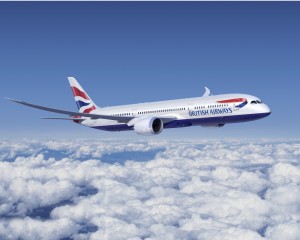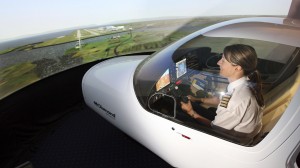 For many want-to-be pilots, the ultimate aim is a career flying for the airlines, enjoying that most enviable of lifestyles, travelling around the globe at the controls of some of the most sophisticated aircraft on the planet. And the good news is that there’s a growing number of airlines ready to offer you a helping hand.
For many want-to-be pilots, the ultimate aim is a career flying for the airlines, enjoying that most enviable of lifestyles, travelling around the globe at the controls of some of the most sophisticated aircraft on the planet. And the good news is that there’s a growing number of airlines ready to offer you a helping hand.
Until recently, out-of-work airline pilots were making a living as flying instructors, charter pilots or in non-aviation careers, waiting for the long-term lull in airline recruitment to come to an end. Well, that situation is changing. Major airlines such as British Airways (see the British Airways Future Pilot Scheme), Aer Lingus and Ryanair have all introduced cadet recruitment schemes offering places on training programmes, with more carriers predicted to follow suit. Alongside a growth in part-sponsorship schemes and a number of established training scholarships (www.flyer.co.uk/scholarships), it means that, for the lucky few, the cost of training need not set you back in excess of £100,000.
Midway through 2011, airline manufacturing giant Boeing predicted that the global increase in air travel, combined with many current pilots reaching retirement age, will mean that each year until 2029 there will be a global demand for 23,300 new pilots. The question is, how do you make the most of this opportunity?
The UK and Europe is home to a number of established, top-ranking Flight Training Organisations, commonly known as FTOs, offering two training routes, the integrated
and modular options, with some also offering a third route, the Multi-Crew Pilot Licence (MPL).
The integrated route
The integrated route involves a full-time course of study, generally lasting around 14 months. This takes a student from complete beginner to a position where they are ready to take up a role as a commercial pilot. The main advantage is that a student enters an intense course of study within a dedicated and well-equipped training facility, surrounded by like-minded students and often with links to leading airlines.
Being a full-time student means your progress can be monitored at each stage of training. Should you fail your ground exams and flight tests during your training (and this is exactly the same whether you’ve chosen the integrated or modular routes) while the chance does exist to retake them, airlines do look more favourably on graduates who have passed first time and with top marks.
While much of your training is completed as part of a curriculum that has been set by the CAA, it’s the specific character, location, cost and presentation of each FTO that will help you decide which is the best suited for you.
The training itself can be split into specific sections, which typically run like this.
- The ATPL ground exams – for many, the most demanding part of the training. You’ll need to pass 14 exams covering subjects such as navigation, flight planning and
- aviation law.
- Flight training – the fun bit. A majority
- of this may well take place overseas, often in the USA, which offers cheaper flying and better weather.
- Night Qualification – your first additional qualification.
- Commercial Pilot Licence – the CPL is a basic requirement to be allowed to fly for financial reward. This is a major stepping-stone. You need a minimum of 150 hours of flight time to get this far, flying aircraft with retractable undercarriage and variable-pitch propellers.
- Multi-engine rating.
- Instrument Rating – the most demanding of the flying skills, flying solely with reference to the aeroplane’s instruments.
- Multi-Crew Co-operation – learning to work as a team, a requisite for the majority of professional pilots.
With all of this successfully completed, you’ll have what is known as a frozen ATPL. The ‘frozen’ part refers to the fact that you’ve passed the theory part of the Airline Transport Pilot Licence; to ‘unfreeze’ it you’ll need to have a total of 1,500 hours flying-time logged. You’ll also need a type rating, basically the result of a course of training undertaken that is individual to each type of aircraft, e.g. a Boeing 737-400. It’s now uncommon to have to pay for your first type rating yourself, at a cost of between £20,000 and £30,000 – although this could change. You can generally expect future type ratings to be paid for by your employers.
You can’t just buy your way onto an integrated course. You have to apply for and pass a series of selection tests that will gauge your suitability to be a pilot and work in a team. Each FTO has its own tests, although they are broadly similar.
 The modular route
The modular route
With banks no longer keen to lend unsecured loans, and pilot training grants very difficult to come by, the modular training route is increasingly popular, offering training towards exactly the same qualifications at the same high standard but for typically half the cost – or less – and within a similar timeframe.
The big difference from the integrated route is that the study doesn’t necessarily take place as a full-time study option or over a set period of time – instead it can be done at the student’s own pace, module by module, as time and money allow. What’s more, in most cases the cost is substantially less and you can train in ‘blocks’, allowing the cost to be spread over a longer period, or even allowing you to return to work between modules.
Airlines are recognising the benefits of employing graduates from the modular method. For example, Flybe’s Chief Pilot, Ian Baston explains, “Modular courses tend to produce pilots who have come from a wide background and experience and this can be very advantageous when we come to look at suitability for command in the future. We do require that the professional flying aspect of a modular course is undertaken at a maximum of two different FTOs in order to ensure a degree of continuity and enable the FTO to give us reasonable feedback on an individual’s performance, progress and character. This does mean that any PPL training, ground school examinations or MCC can be carried out at other FTOs. In order to reinforce our support of modular courses, we maintain close relationships with a number of FTOs offering such courses including Professional Air Training (PAT) and Atlantic Flight Training and Aeros.”
A student might typically complete a module and then take some time out to go back to work and earn enough money to start the next module. Alternatively, they might combine a job with their pilot studies at weekends and in the evenings. This does create its own challenges. It can obviously take much longer to complete the training and the extra workload of holding down a job while also studying is extremely demanding. Without the support of a strict timetable, and being among tutors and other students, motivation can also be difficult to maintain. However, as Colin Dobney, Head of Training at Stapleford Flight Centre explains, most modular FTOs have the experience to identify the challenges encountered by this type of training and can act accordingly. “We work with the students to schedule their training so that they can make the most of the time available. Also, when they’re nearing the completion of each module, we recommend that they come in for a full week and we help them to be as fully prepared as possible for the flight tests and exams.”
The MPL
A recent – and increasingly popular – addition to the list of training options is the Multi-Crew Pilot Licence, whereby a student will train with an FTO specifically for a selected airline that uses this type of licence (not all airlines do). The huge attraction of this route is that you’re highly likely to get a job with the chosen airline at the end of the training, while for the airlines each curriculum is designed to feature its standard operating procedures.
The big difference is in the training itself. With an integrated course of study, for example, a student would expect to expect to graduate with in excess of 200 hours flight time. With an MPL this is likely to be closer to 90 hours, with a much larger proportion of the training taking place on simulators.
One word of note. If, for example, you have earned your MPL to fly with airline X and then want to fly with airline Y, airline Y might well demand that you receive additional training. What’s more, with an MPL you cannot fly as a Captain The good news, however, is that an MPL can be converted to an ATPL once 1,500 hours of flight time has been achieved by a pilot.
Keep an eye out on this website for spotlights on the different routes, as well as case studies and examples of pilot experiences to help you to understand your options.
